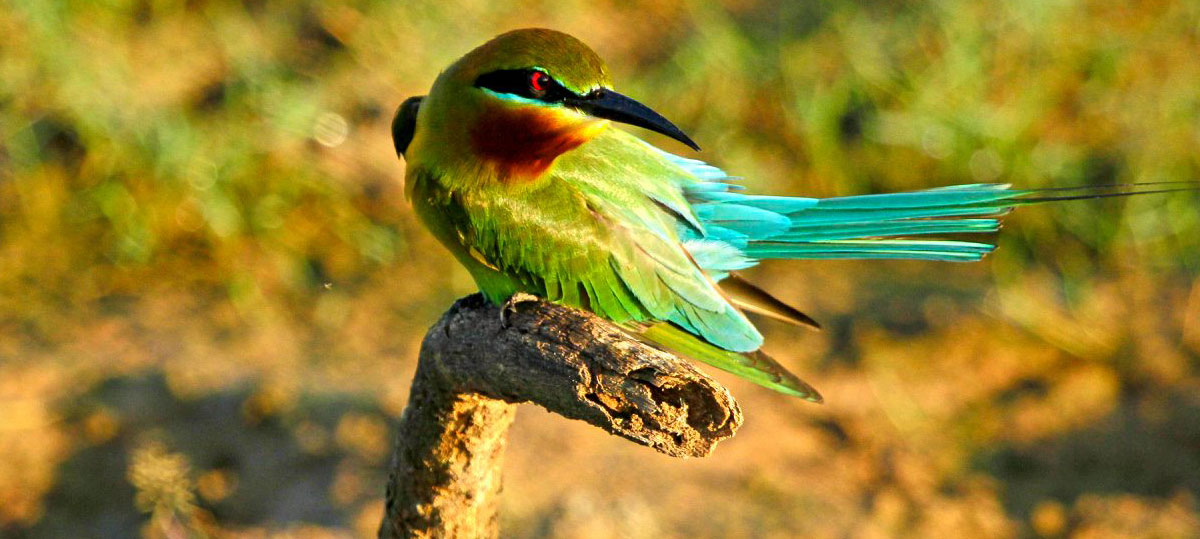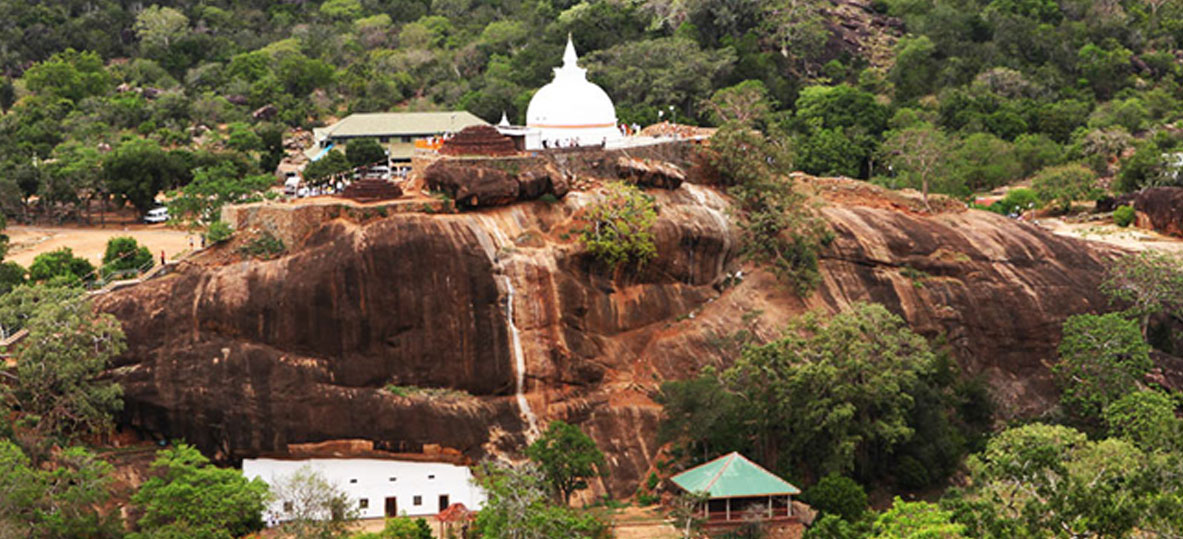Yala National Park is the most visited and second largest national park in Sri Lanka. Actually it consists of five blocks, two of which are now open to the public; and also adjoining parks. The blocks have individual names also, like Ruhuna National Park for the (best known) block 1 and Kumana National Park or ‘Yala East’ for the adjoining area. It is situated in the southeast region of the country, and lies in Southern Province and Uva Province. The park covers 979 square kilometres (378 sq mi) and is located about 300 kilometres (190 mi) from Colombo. Yala was designated as a wildlife sanctuary in 1900, and, along with Wilpattu it was one of the first two national parks in Sri Lanka, having been designated in 1938. The park is best known for its variety of wild animals. It is important for the conservation of Sri Lankan Elephants and aquatic birds.


Kirinda is a beautiful place visited by thousands of pilgrims each year. The ancient temple is sited atop a rocky outcrop from which one can obtain magnificent views of the desolate coast with its long stretch of sand dunes and the ocean beyond. On a clear day the light house on the Great Basses reef appears like a needle in the far distance. With the atmosphere of its magnificent setting aside the sea, Kirinda is the appropriate setting of one of those popular legends that constitute early Sri Lankan history. Legend recounts that Kirinda was the place where Princess Viharamahadevi drifted ashore after being sacrificed to the sea to atone for her father’s, King Kelanitissa, sacrilegious act of killing a monk by putting him in a cauldron of boiling oil. After receiving the Princess, King Kavantissa, who was the ruler of Ruhuna at that time, married the young princess and the couple eventually had 2 sons. Dutugemunu, the eldest son of Viharamahadevi became one of the legends in Sri Lankan history.

Kataragama (also Katharagama, Katirkamam and Kathirgamam, Sinhala: කතරගම, Tamil: கதிர்காமம் (Katirkāmam)) is a pilgrimage town popular with Buddhist, Hindu, Muslim and indigenous Vedda communities of Sri Lanka and South India. The town has Ruhunu Maha Kataragama devalaya, a shrine dedicated to Skanda-Murukan also known as Kataragamadevio. Kataragama is situated in the Monaragala District of Uva province, Sri Lanka. It is situated 228 km ESE of Colombo, the capital of Sri Lanka. Although Kataragama was a small village in medieval times, today it is a fast developing township surrounded by jungle in the South Eastern region of Sri Lanka. It also houses the ancient Kiri Vehera Buddhist stupa. The town has a venerable history dating back to the last centuries of BCE. It also was the seat of government of many Sinhalese kings during the days of Rohana kingdom. Since the 1950’s the city has undergone many improvements with successive governments investing in public transportation, medical facilities, and business development and hotel services. It adjoins the popular Yala national park.

Bundala National Park is an internationally important wintering ground for migratory water birds in Sri Lanka. Bundala harbors 197 species of Birds, the highlight being the Greater Flamingo, which migrate in large flocks. Bundala was designated a wildlife sanctuary in 1969 and redesignated to a national park on 4 January 1993.[2] In 1991 Bundala became the first wetland to be declared as a Ramsar site in Sri Lanka. In 2005 the national park was designated as a biosphere reserve by UNESCO, the fourth biosphere reserve in Sri Lanka. The national park is situated 245 kilometres (152 mi) southeast of Colombo.

Situlpawwa rock temple with a history of over 2200 years is one of the significant Buddhist sites built in the 2nd Century BC.Located deep within the Yala National Park within the Hambantota district in the deep south of Sri Lanka, Sithulpawwa rock temple has a stunning setting. There are two temples perched high atop hard volcanic rock outcrops. Maha Sithulpauwa rock is 400 feet in height. . The dagoba is situated on top of the rock and is reached by a difficult steep climb, aided by steps cut into the rock. The dagoba is believed to have been built by king Kawantissa. It houses an intricate cave complex The name Sithulpauwa is derived from the word ‘Chittalapabbata’ which means the hill of the quiet mind. The rock temple was a place of worship for devotees as well as a centre of Buddhist scholarship. It is believed that in ancient times this rock temple once housed a total of 12,000 Arhats or monks who achieved the highest mind level in Buddhism. The life that the Arhats lived in Sithulpawwa was a hard one, with silence and solitude. The rock temple is famous for its early Brahmi script, ruins of the preaching house and the fragments of paintings that can be viewed at the image house. nside Situlpawwa are a number of gal len (rock caves), dagoba (pagodas), Poya geval (chapter houses), bodhigara, pilimageval and pokunu (ponds). Sithulpawwa rock temple houses an intrincate temple complex. The caves inside have been built to make it suitable for the monks to live in.